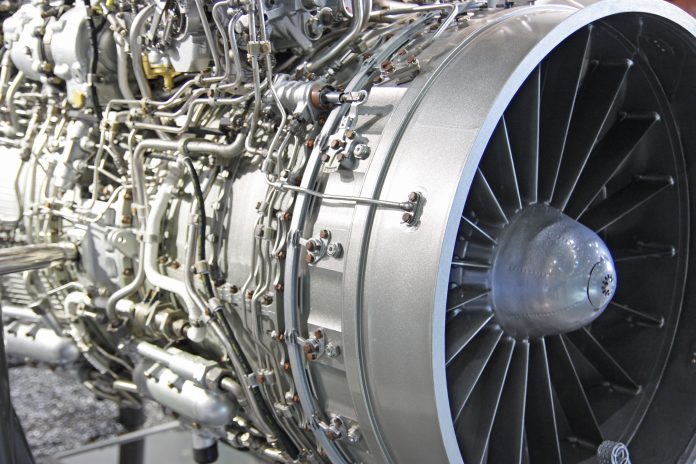A series of breakthroughs in materials science are helping to drive efficiency in aerospace manufacturing, by improving material properties and reducing aircraft production times, whilst maintaining a low overall weight
Much of this is due to the use of advanced composites, which are now widely used in many parts of modern aircraft design – from the fuselage to the wings and control surfaces, and even cabin interiors.
One area of modern aircraft design that has changed comparatively little since its development in the early 1900s, is the jet engine. This is largely due to the extreme pressure and temperature constraints that apply when testing materials for use in this application.
Now, the latest ceramic matrix composites (CMCs) are beginning to demonstrate their suitability for turbo-engine applications and promising to bring significant gains. From an intellectual property (IP) perspective, a patent search has revealed some of the manufacturers leading the way.
Driving this innovation activity is the push from governments around the world to improve fuel efficiency and reduce air pollution, which is in part a response to growing consumer concern for environmental protection.
The EU’s Strategic Research and Innovation Agenda (SRIA 2050) has set a target to achieve a 75% reduction in aviation CO2 emissions by 2050, compared to 2000 levels. This needs to be achieved whilst reducing NOx emissions by 90% and reducing noise pollution by 6% over the same time period. To date, the main focus for innovators has been reducing the overall weight of the turbojet engine, whilst maintaining its reliability and enhancing its thrust per fuel consumption.
Currently, turbojet engines use a wide variety of materials. Fan blades are typically made from aluminium, titanium or stainless steel, whereas compressors are mainly made from nickel-, cobalt- or iron-based alloys. Superalloys made using refractory metals such as tungsten, molybdenum, niobium and tantalum tend to be used in the combustion chamber, where temperatures can reach 1,700 degrees centigrade.
Turbine blades are commonly made from a nickel-based superalloy, where the temperatures and pressures are so high that the turbine blades need internal cooling channels in order to operate at temperatures that exceed the melting temperature of the superalloy.
Despite the obvious strengths of nickel-based superalloys, there is always a drive to develop lighter materials that perform better, and this has resulted in the generation of new ceramic matrix composite (CMC) turbine blades.
However, these materials can be extremely difficult to manufacture, due to their complex architecture, and until recently, they were only used on static parts of the engine, such as the turbine shroud.
However, engine manufacturers such as GE Aviation and Rolls-Royce have begun exploring their use in even more demanding applications, such as turbine blades.
The redesign of turbine blades, from nickel-based superalloys to CMCs, brings with it many challenges that need to be overcome before we are likely to see the widespread adoption of this technology in the moving parts of aero engines. For instance, despite being able to withstand higher temperatures than nickel-based superalloys, CMCs have a lower thermal conductivity that requires new methods of cooling to be developed.
As a result, Siemens Energy has recently applied for patent protection for an innovative hybrid turbine blade comprising a ceramic composite leading edge and a nickel-based superalloy trailing edge, which is lighter and stiffer than a non-hybrid design, whilst tackling difficulties in cooling the blade.
Typically, these material systems involve enveloping the ceramic portion to create a permanent interlock. A further patent application by Siemens Energy for a mechanical interlock system is currently pending, which allows these two components to be joined, whilst still allowing future retrofitting and repairs to be undertaken. This hybrid approach is a great compromise that allows the two materials to complement each other.
In a further development, Rolls-Royce secured patent protection in Europe for a CMC turbine blade that included a tubular root core, connecting to the rotor disk, which is strengthened by ceramic fibres. However, whilst the synergy between different constituents in composites can bring significant benefits, their multitude of material boundaries can create weaknesses in the structures that encourage defects and cracks to form.
To tackle some of these issues, GE has applied for patent protection for a CMC turbine blade that advantageously interweaves CMC plies with a CMC insert positioned around the neck region of the blade, where the stresses are greatest, in order to help prevent and inhibit the propagation of cracks down the length of the blade.
Whereas metals are generally a homogeneous block of material, the replacement of metals with composite materials could open up a vast amount of design freedom, as there are suddenly many more choices of material and even more combinations of those materials. For instance, the fibres within the CMCs can be controlled in terms of location, orientation and degree of alignment.
This complexity introduces a huge number of variables, which each need to be explored in order to find the optimal solution.
Finding the optimal solution has historically been the result of extensive trial and error, or more recently computational optimisation, but the latest advances in Artificial Intelligence (AI) and Machine Learning (ML) may allow it to have a significant role to play in helping to realise the real-world benefits of composite materials in extreme conditions, where the conventional design rulebook is of less use.
ML could be used to explore many different, and potentially advantageous, material systems and help predict how they would perform in certain temperature and pressure environments. These findings could help to inform the R&D process. For example, a synergistic material combination could be found that strikes the perfect balance between aerodynamic benefits, structural integrity, and thermodynamic performance.
These are exciting times for materials science innovation for use in high-value manufacturing and by harnessing AI and ML capabilities research scientists may be able to develop new materials for the most demanding industrial applications. For those at the forefront of this innovation curve, securing patent protection is a necessity, which will allow them to commercialise their investment in R&D whilst bringing new materials to market.
Gemma McGeough
Patent attorney
Advanced Engineering group











